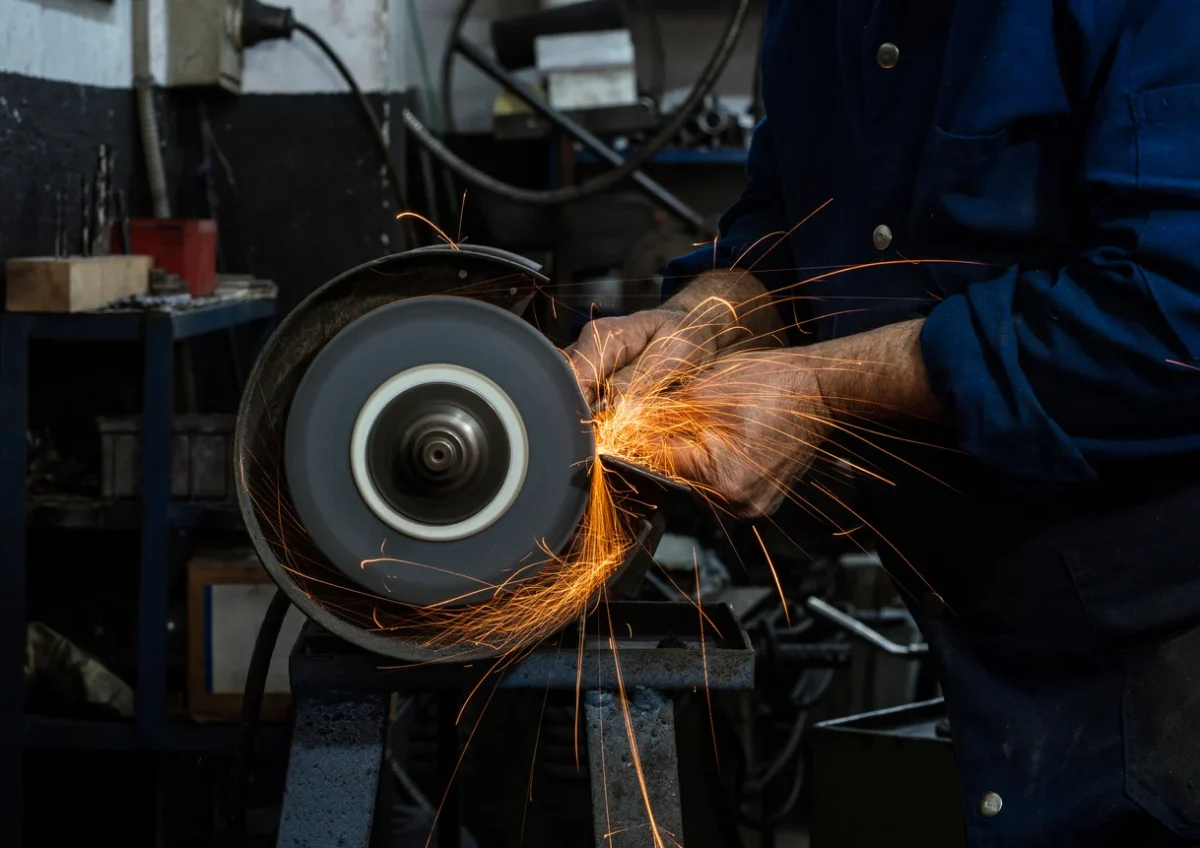
Maintenance is a critical part of owning and operating a factory, and it’s almost always something you can improve on. In this guide, we cover the basics and then show you how to take the next step in factory maintenance management.
What is factory maintenance?
Factory maintenance, which you can also call industrial maintenance, is the process of making sure all of the assets in your factories and industrial plants are in peak operating condition. But there’s another important component to the role—controlling costs. Maintenance managers must find the sweet spot between keeping assets and equipment in the best possible condition without racking up a huge maintenance bill.
The best way to perform effective maintenance without making a mockery of your business’s budget is to use a computerized maintenance management system (CMMS). It can help you and your techs do your jobs more effectively. You should also set maintenance KPIs and implement the right mix of maintenance strategies for your assets.
There are all sorts of industries that rely heavily on the skills, knowledge, and experience of factory maintenance managers and technicians, including:
- Manufacturing
- Gas and oil
- Automotive
- Aviation
But that’s just the start. You can find factory maintenance in any industry or sector where there’s heavy equipment that involves large capital expenditures, or where maintenance costs make up a large part of a business’s operational budget.
Why is factory maintenance important?
Very simply, because you can’t run a factory without it. Maintaining your assets is critical if you are to hit production quotas and make quality products. Equipment breakdowns cost time, work hours, and resources, all of which lead to unexpected and unnecessary losses. The role of the factory maintenance team is to step in before those breakdowns occur to prevent downtime and keep the factory operating effectively.
Despite endlessly complaining about the costs, upper management never shuts down factory maintenance departments because they know they’re essential. That said, you still need to put controls in place to make sure it doesn’t cost you more to maintain your equipment than you can make by selling your products.
What is the role of factory maintenance management?
Factory maintenance managers are more concerned with managing the people and the maintenance operations rather than inspecting and repairing the equipment themselves. In a larger factory, there’s likely to be a maintenance planner and supervisor working alongside a maintenance manager. In smaller operations, the maintenance manager will usually cover all of those roles.
As a factory maintenance manager, your responsibilities can include:
- Developing and implementing a proactive maintenance program
- Scheduling maintenance work and coordinating the maintenance team
- Making sure all factory maintenance operations follow OSHA guidelines
- Forecasting, ordering, and negotiating the price of spare parts inventory
- Hiring subcontractors for specialist maintenance work
- Managing the maintenance budget
Another important part of factory maintenance management is to always be on the lookout for new technology and tools that can reduce costs and improve the effectiveness of your maintenance operation.
What are the different strategies in factory maintenance?
Generally speaking, there are four maintenance strategies that you can use in a factory or industrial setting. You should apply a mixture of maintenance strategies depending on the maintenance requirements of your assets and the resources you have available.
Preventive maintenance
Planned preventive maintenance is all about taking action to avoid problems before they occur. Although it is more labor and resource-intensive, it is almost always cheaper than reactive maintenance in the long run as it helps to reduce the downtime associated with equipment failures. As an example, a manufacturer might service a piece of equipment every 5,000 hours to keep it running smoothly and prevent a breakdown.
Run-to-failure maintenance
It might not seem like it but choosing to use equipment until it breaks is a legitimate maintenance strategy for certain assets. If you have a nonessential piece of equipment that is not expensive to replace, using it until it fails and then replacing it is likely to be more cost-effective than maintaining and repairing it.
Condition-based maintenance
Condition-based maintenance uses heat sensors, vibration analysis, flow rate, and other testing methods to give you information about an asset’s condition. That helps you determine the appropriate time to perform maintenance tasks.
Predictive maintenance
Predictive maintenance takes condition-based maintenance one step further. As well as gathering condition-based data about an asset, you combine that with industry information or your own historical data to predict when an asset could fail. You can then schedule maintenance accordingly.
What are factory maintenance management best practices?
A sound maintenance plan is the key to keeping your factory up and running. It helps to maximize productivity, minimize downtime, keep a lid on costs, and create a safe working environment. Here are a few guidelines you can follow to improve your maintenance operation across a range of factory types.
At the most basic level, getting organized is a simple way to smooth your workflow and make your factory maintenance more efficient. Taking steps like creating well-defined work areas and clearly defining floor paths for moving materials through each manufacturing process makes life easier for your operators and your techs. Centralizing the administration of all the maintenance processes is another big step in the right direction.
Once you’ve centralized your maintenance processes, you then have the oversight to introduce proactive maintenance where it will have the best results. You should start with your most critical assets and determine the most appropriate maintenance strategy (or a combination of strategies) based on their requirements. Although fixing things that are already broken does have a place in most factories, you cannot improve your maintenance activities if you rely on this strategy alone.
Now you have an appropriate maintenance strategy for each asset, you can start creating well-defined procedures and communicating them to your team. Creating preventive maintenance checklists and standard operating procedures will help your team understand when to do maintenance tasks and how to perform them.
You should also make sure that your techs understand OHSA guidelines surrounding PPE, lockout-tagout procedures, and safety management, and check that they have ready access to the tools they need to do the work, such as repair supplies and replacement parts.
Finally, you need to take steps to measure the impact of your improvements. CMMS can help you define your maintenance goals, track your progress, and generate reports that show you what you are doing well and where you can improve. You can then target those inefficiencies.
How can Eptura CMMS help?
Trying to address your factory maintenance management with yesterday’s tools is inefficient at best and potentially even hazardous. That’s where modern technology such as Eptura CMMS® can help. It brings together all of the aspects of a sound maintenance plan to put you in control.
Eptura CMMS gives you visibility of every aspect of your factory maintenance operation, including your assets, people, and parts, so you can see the whole picture. With easy-to-read and customizable dashboards, you can assign jobs, schedule and prioritize tasks, and track progress, all from one place.
Eptura’s mobile maintenance app is another powerful tool, helping you do everything from generating and assigning work orders to tracking work in progress. And techs can log information directly into the system in real time to boost transparency and accountability.
What’s next?
Want to find out how Eptura CMMS can help you take control of your factory maintenance? Then book a live demo with one of our experts or get in touch so we can answer your questions.
Executive summary
Factory maintenance, also called industrial maintenance, is the process of making sure all of the assets in your factories and industrial plants are in peak operating condition. Maintaining your assets is critical if you are to hit production quotas and make quality products, but you also need to find the sweet spot between maintaining your assets without racking up a huge maintenance bill.
An important part of your factory maintenance management is to determine the most appropriate maintenance strategy to use based on the requirements of each asset and the resources you have available. You can then follow the best practice steps to improve your maintenance operation across a range of factory types.
Using modern tools and keeping up with technology is a simple step you can take to improve your factory maintenance operation. Eptura CMMS brings together all of the aspects of a sound maintenance plan to put you in control.








